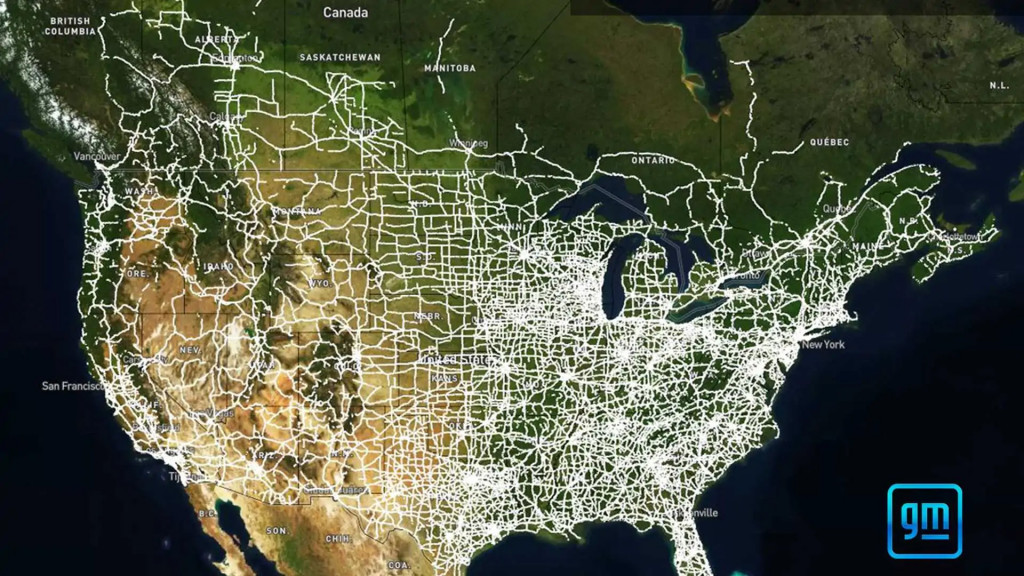GM's leading Super Cruise driver-assist feature, a limited self-driving system for highways, is about to greatly expand its area of use.
GM in August announced plans to roll out an updated version of Super Cruise covering 400,000 miles of roads in the U.S. and Canada, or double what the system can currently handle, and last week the automaker confirmed the vehicles listed below are the first to receive it.
2023 Cadillac Escalade, Escalade ESV and Escalade-V
2023 Chevrolet Tahoe (High Country and Premier trims)
2023 Chevrolet Suburban (High Country and Premier trims)
2023 GMC Yukon Denali Ultimate

GM's Super Cruise system now covers approximately 400,000 miles of roads across the U.S. and Canada
The change affects vehicles built on Oct. 3 or later and equipped with the Super Cruise feature. The updated version is being made available as an over-the-air update at no additional charge, and vehicles equipped with Google Maps are able to display which routes are compatible with Super Cruise during route selection.
Super Cruise combines multiple driver-assist features like adaptive cruise control and active lane control with map and GPS data to accurately place a vehicle in its lane and ensure safe and smooth operation. While it's a true hands-free system, it still requires the driver to monitor things at all times and take action when necessary. Otherwise, it will shut down. This means it still ranks at Level 2 on the SAE scale of self-driving capability. To rank above Level 2, self-driving systems need to function in eyes-off mode.
GM plans to have Super Cruise available on 22 vehicles globally by the end of 2023, and in the following year will roll out a much more advanced version dubbed Ultra Cruise. Ultra Cruise, which is already confirmed for the 2024 Cadillac Celestiq, promises to cover around 95% of the nation's roads, albeit with the driver still required to monitor things. According to GM, Ultra Cruise will be able to recognize permanent traffic control devices, follow navigation routes, follow posted speed limits, perform both automatic and on-demand lane changes, make left and right turns, avoid objects, and park in a residential driveway.



